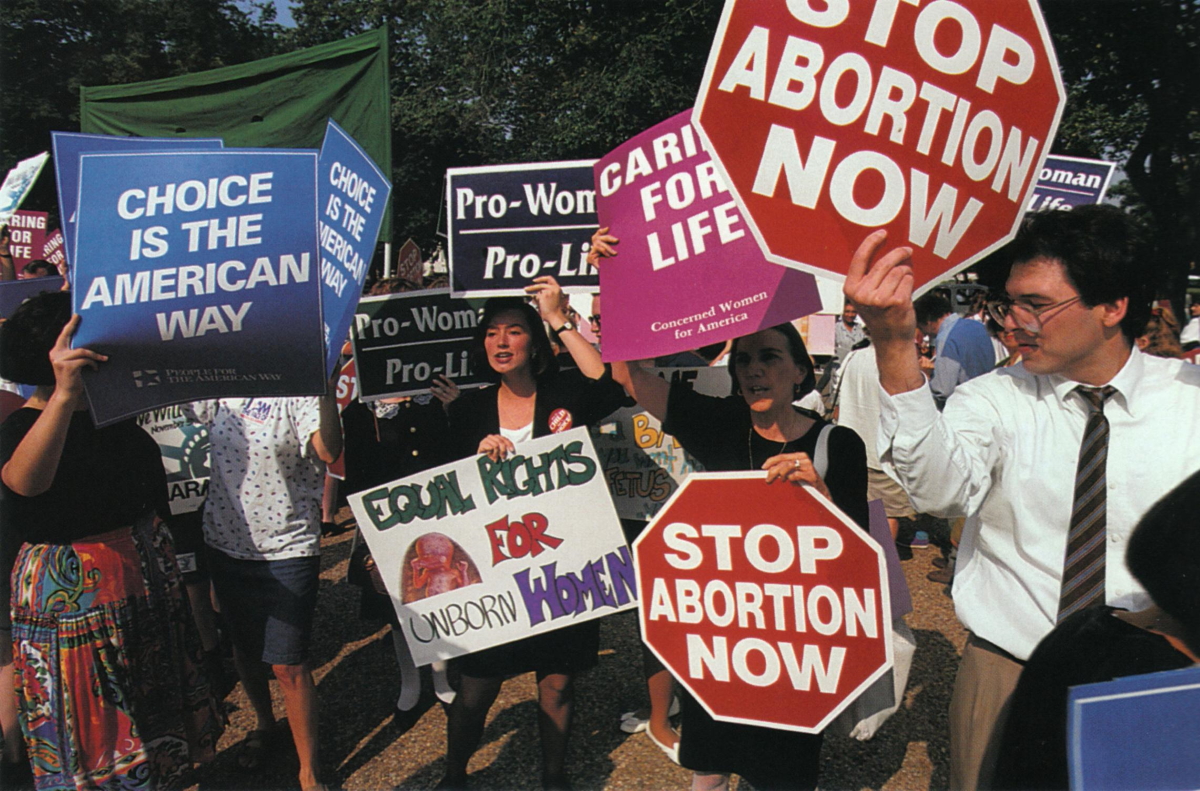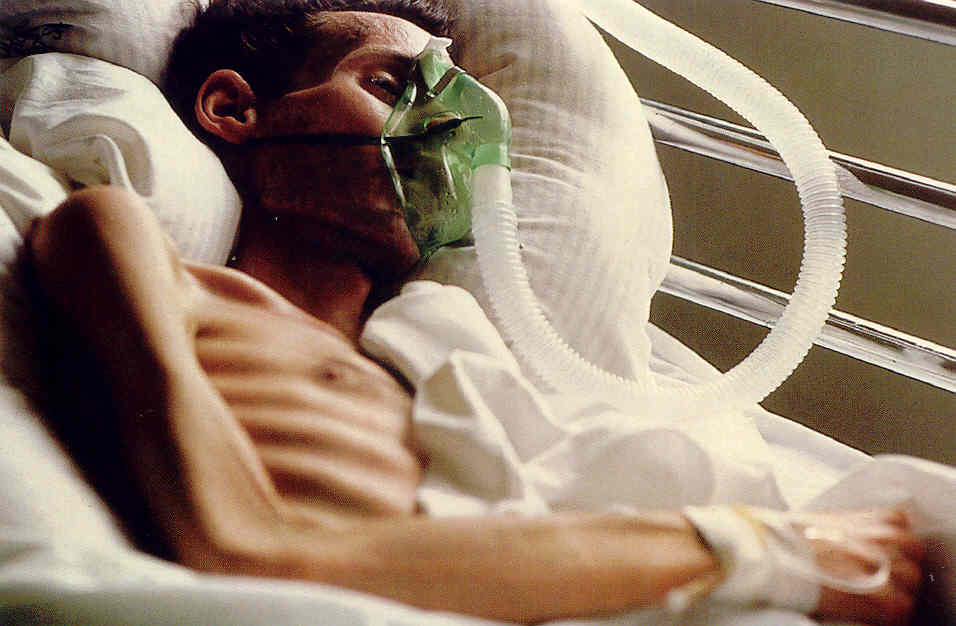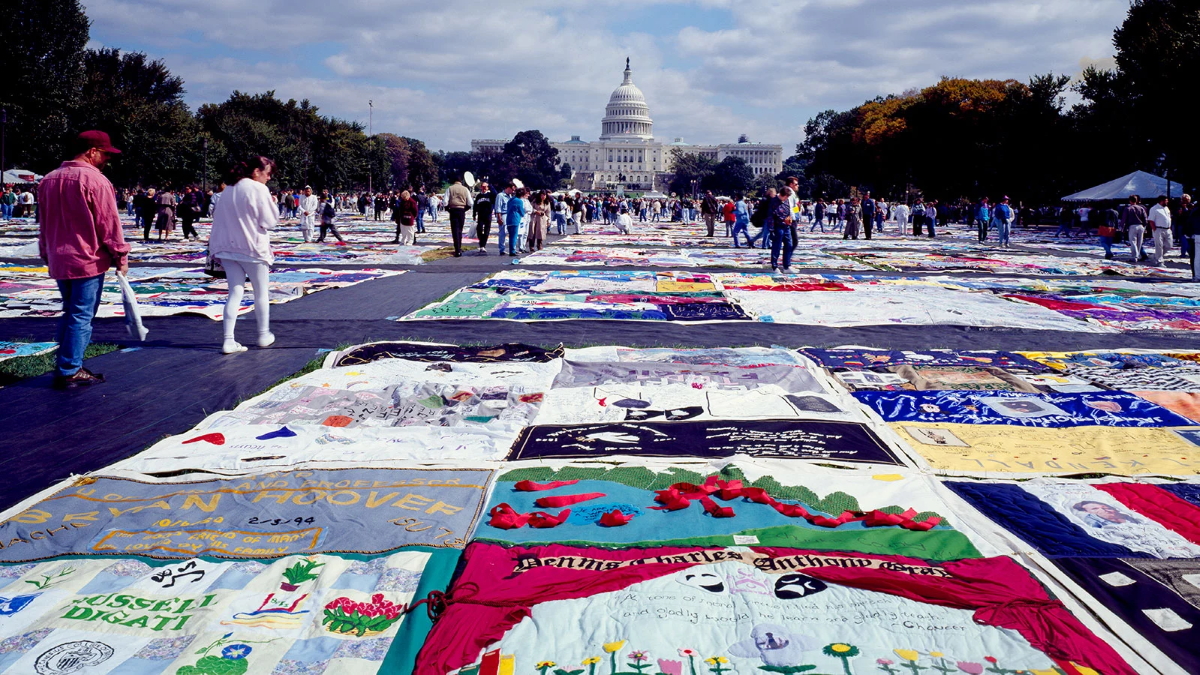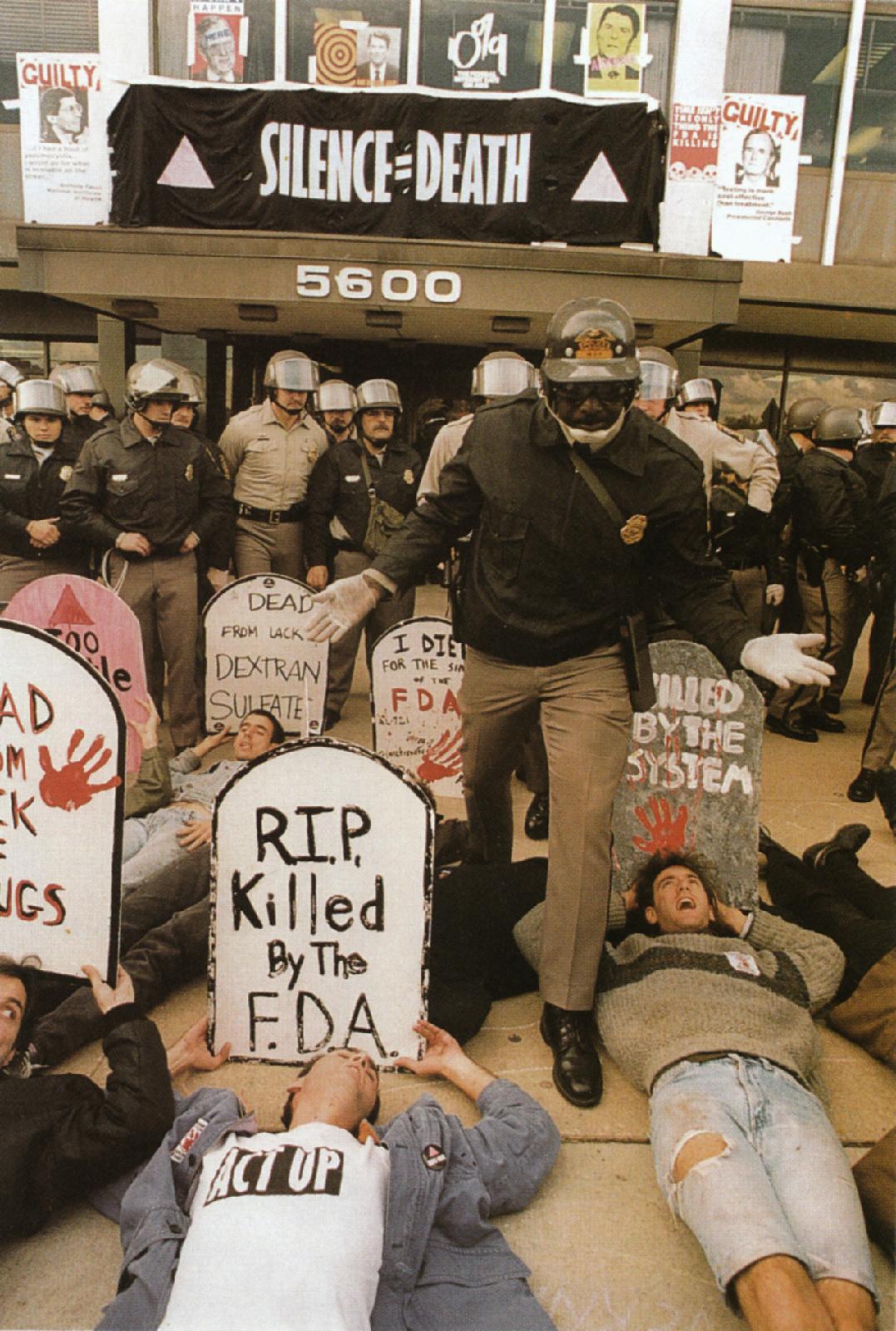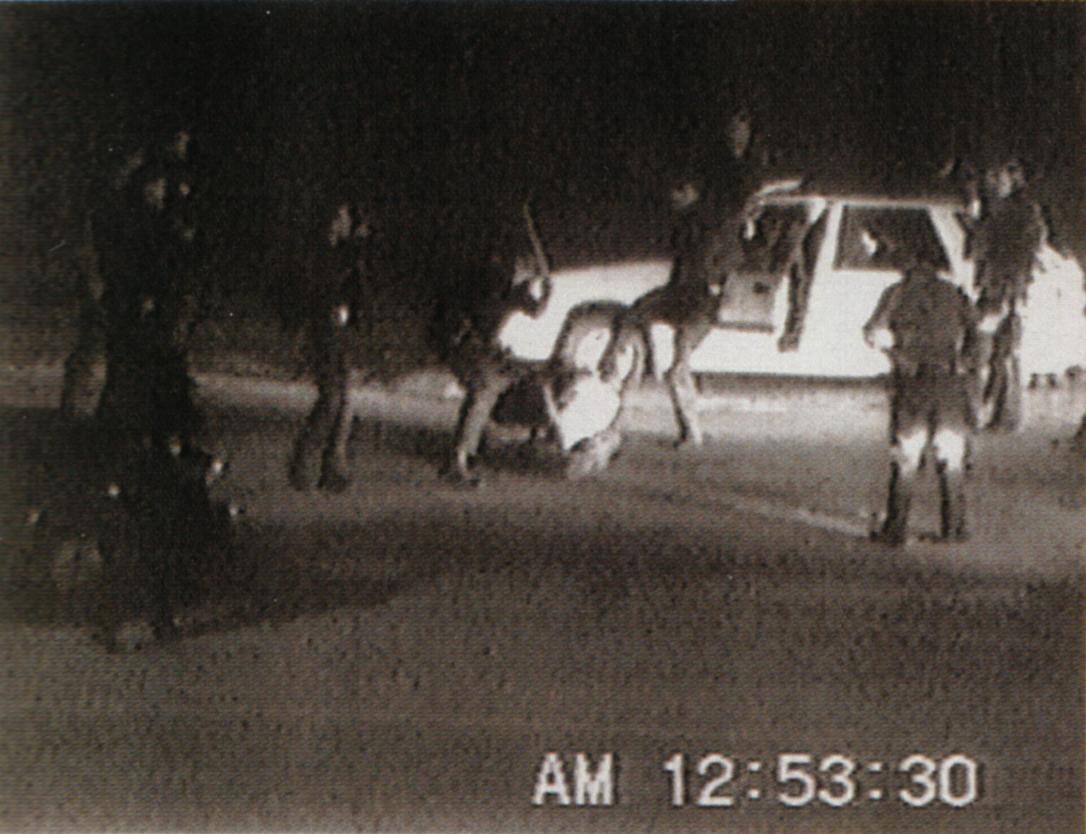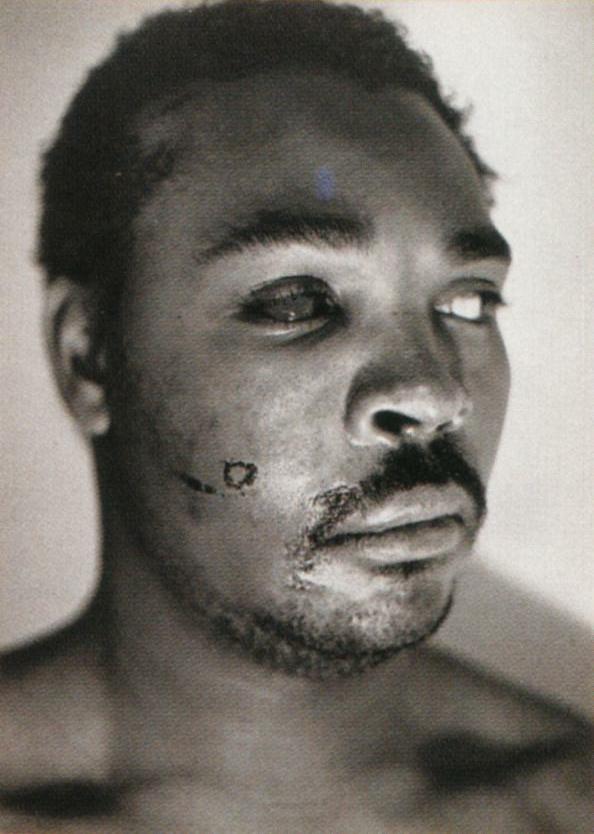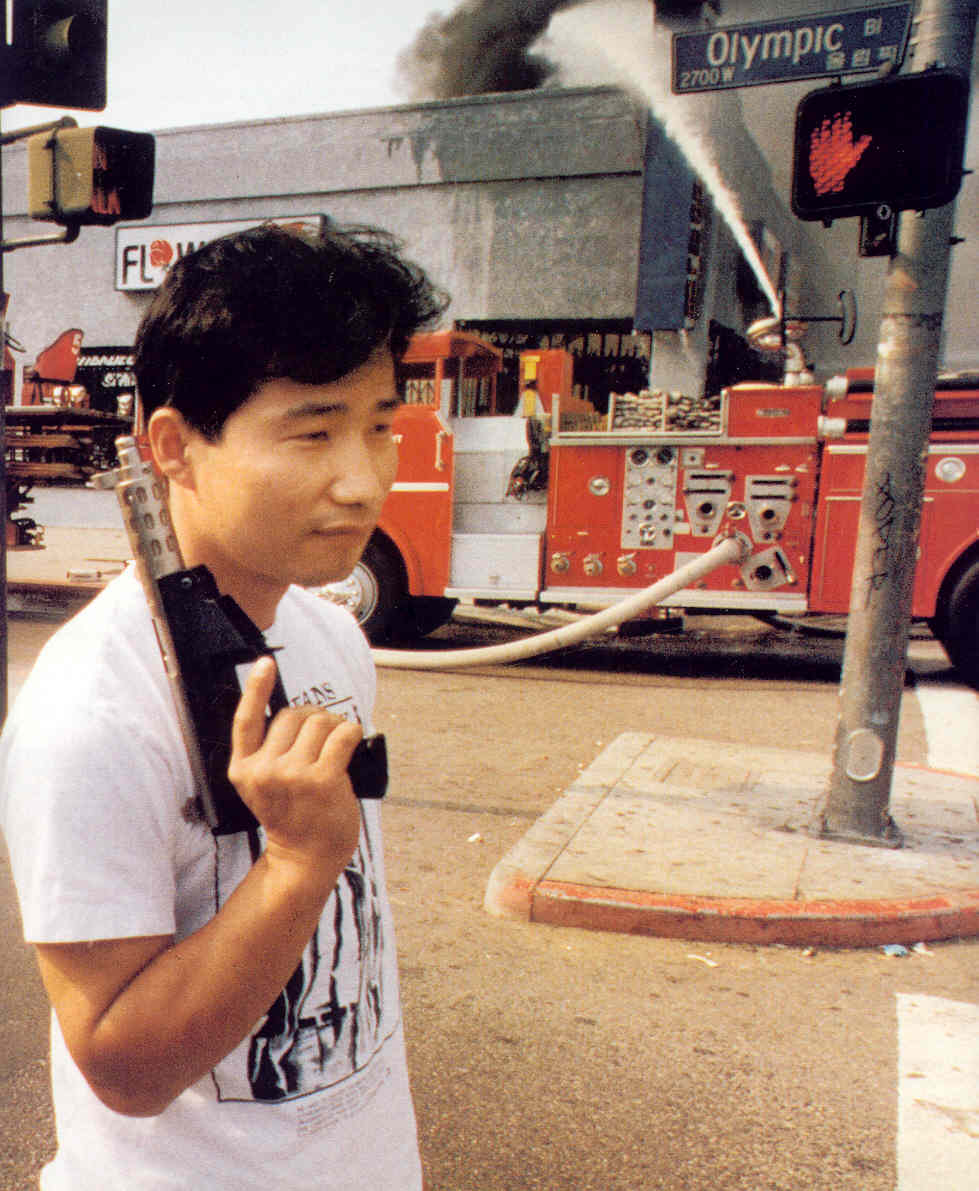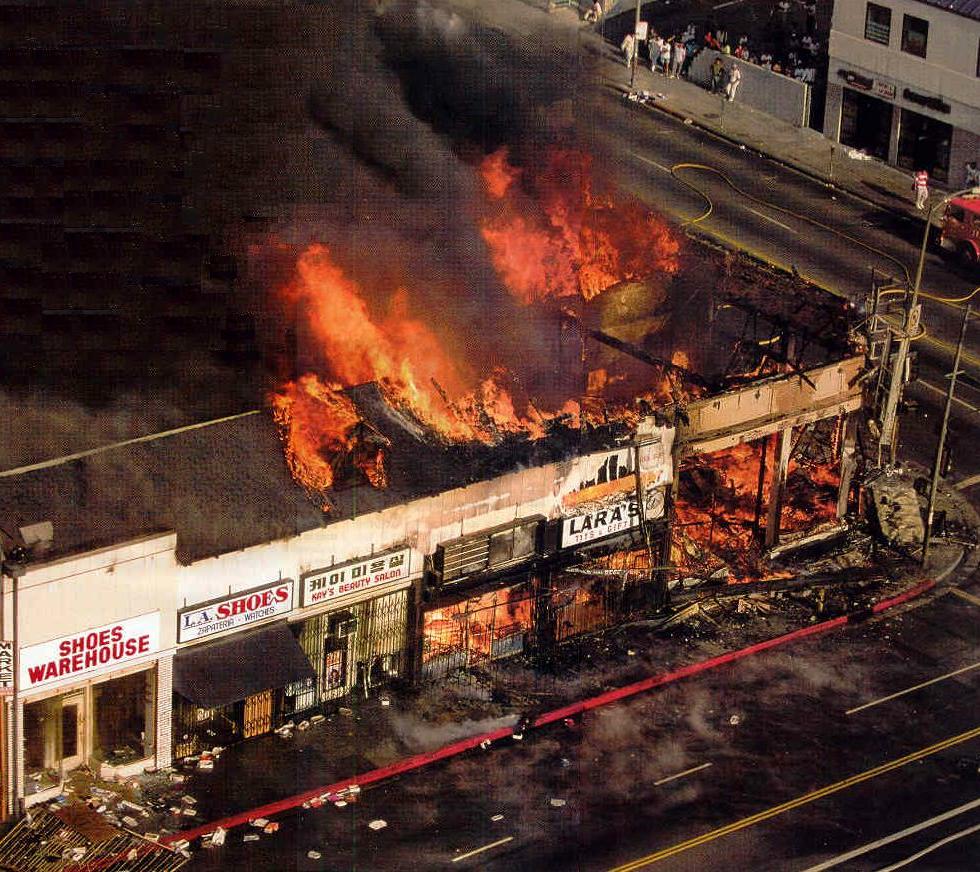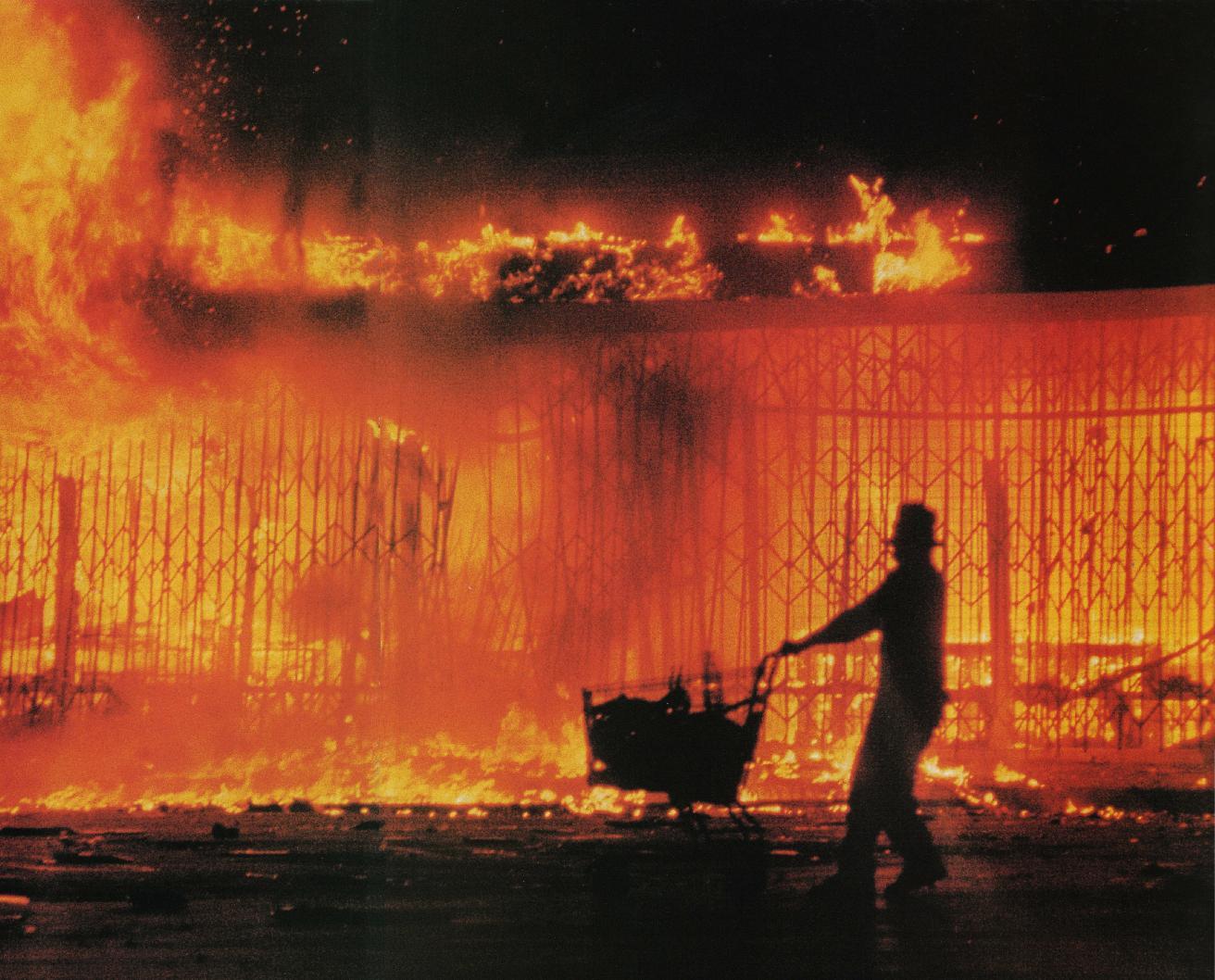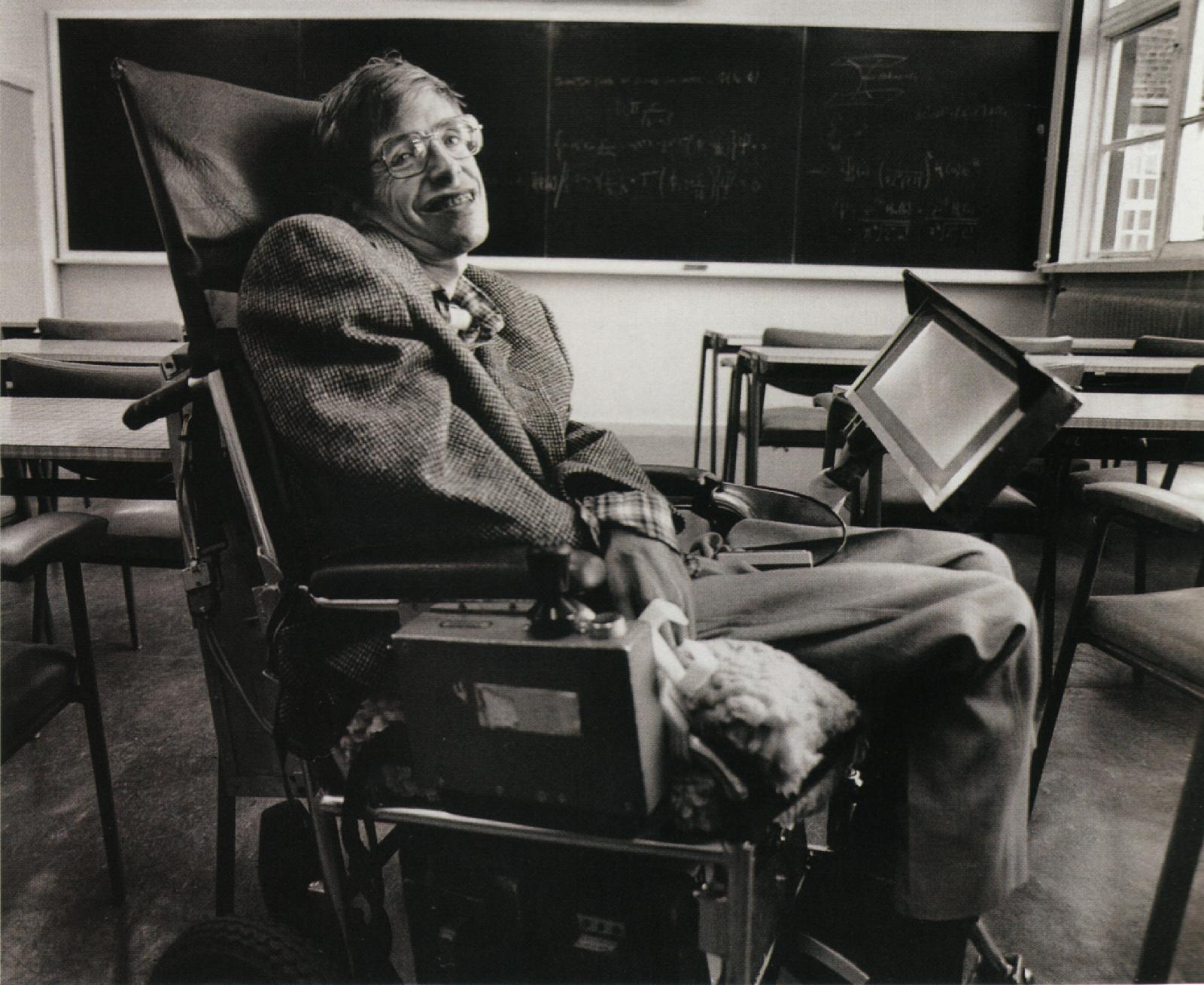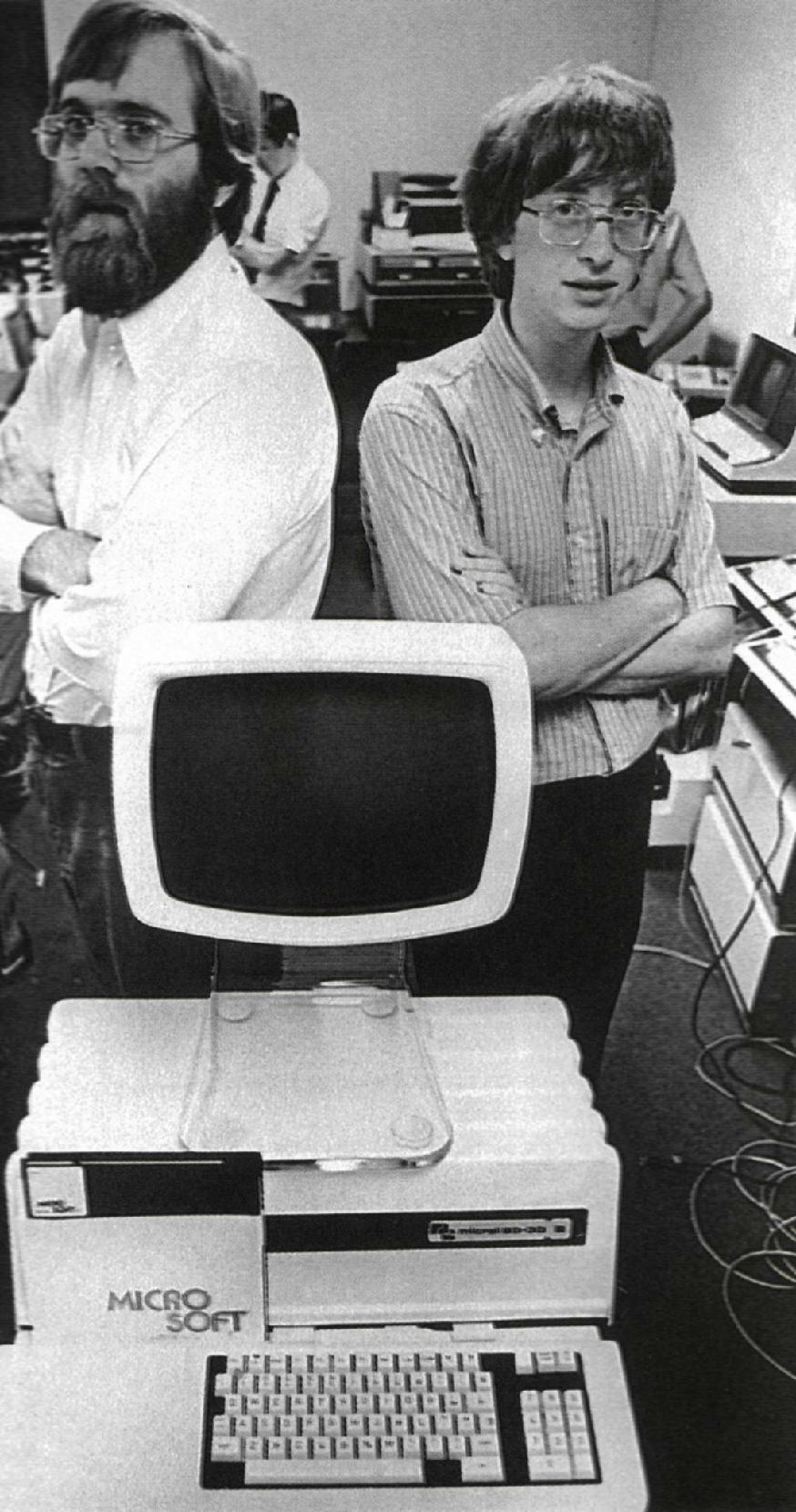24. GLORY: THE REAGAN-BUSH (I) ERA

THE AMERICAN CULTURAL DIVIDE WIDENS AND DEEPENS

THE AMERICAN CULTURAL DIVIDE WIDENS AND DEEPENS
 Christianity struggling to find its way
Christianity struggling to find its wayforward
 The Supreme Court becomes a major
The Supreme Court becomes a major
battlefield in the cultural war
 Racial feelings explode: The Rodney
Racial feelings explode: The Rodney
King incident
 Christian leadership in the White House
Christian leadership in the White House
 The world of science continues to
The world of science continues to
challenge our understanding of life
The textual material on this webpage is drawn directly from my work
America – The Covenant Nation © 2021, Volume Two, pages 300-312.
CHRISTIANITY STRUGGLING TO FIND ITS WAY |
|
The 1980s offered numerous examples of how, beneath the rather normal political posture that American politics seemed to take with the Reagan-Bush return of Middle-America to its place of prominence, serious challenges to America's social-moral order were taking place. The Boomer mentality (also embraced by a still-disenchanted intellectual-academic world) had not gone away, by any means. It simply was working somewhere below the surface of the more visible Reagan-Bush world. This rising anti-Middle-America (actually just anti-traditionalist) culture would have an increasingly negative impact on American Christianity, the source of the traditional social-cultural values that had shaped America since its founding 3 centuries earlier. The old denominations (Methodist, Presbyterian, Lutheran, Episcopal, etc.) that had been at the heart of that traditional culture were still holding to the older Biblical view of society and its rules and obligations. However, the "New Age" Boomers, not unexpectedly, as a matter of high principle, continued to see such faith as mere religious bigotry. Thus recruitment of Boomer America into traditional Christianity was rather marginal. As a consequence, as the 1980s rolled along, it was increasingly just the conservative Vet generation which made up most of the Sunday morning gathering at the traditional American church. And as that sector of the population aged (and began to die off) so also did church attendance continue to evidence a slow but steady decline. To try to reverse this trend, the impulse of the more "enlightened" members of the denominational leadership was to try (once again) to make their churches more "relevant" to this new post-Vet culture. Thus as the Boomer culture took up the perfectionist crusade for "peace and social justice," so also the leading voices of the major denominations turned to these same matters, proclaiming the pursuit of peace and social justice as being more relevant to the times than promoting the "old-time religion" of personal repentance and salvation. There was even a bold attempt to
accommodate rising feminism by insisting on the use of "inclusive
language" in all religious discourse within the mainline denominations.
Actually, there was nothing at all inclusive about such language. Quite
the opposite. It was in fact quite exclusive in the way it prohibited
the use of the term "man" or "mankind" when describing the human race
and the world "Father" (or any other male terms) in reference to God.
Indeed, the familiar Revised Standard Version of the Bible itself
underwent a rewrite in order to accommodate "inclusivity," so that the
old Biblical use of the word "brothers" would be replaced by words
implying merely the status as colleagues, or it was simply expanded to
read "brother and sisters" etc., etc. The new morality now decreed that
use of male terminology was to be avoided at all costs. This was the
sin of all sins.1 An event indicative of where inclusivity was taking Christianity occurred in early November of 1993, when over 2000 women (and a handful of men) attended a conference in Minneapolis entitled: "Re-Imagining: A Global Theological Conference by Women, for Men and Women." This conference was a follow-up to the World Council of Churches' Ecumenical Decade: Churches in Solidarity with Women 1988-1998 in which the mainline Protestant churches pledged to be more pro-active in support of women in ministry. Heavy in its support of the Re-Imagining Conference was the Presbyterian Church, especially its Women's Ministry Unit. But Methodist and Lutheran support was also big. Claiming that traditional Christianity throughout its history had long been very hurtful to women, an effort was undertaken to remove not just all male language but all male images within Christianity. Thus God as Father was replaced by God as Sophia, or "Wisdom" (a strongly feminine reference to God). The "masculine" character of Christianity, such as Jesus shedding his blood on the cross for our sins, was attacked as simply male chauvinism that needed to be rejected. "Victim language" was also part of the presentation, such as the reference to the cross as a symbol of evil, the murder of an innocent victim. At the culmination of the conference a communion service was held in which milk (a strictly feminine by-product!) was substituted for the sacramental wine used traditionally in communion services. But the conference ultimately proved to be overkill. The rest of Protestant Christianity had not yet evolved to such "progressive" standards, and the reaction within the mainline churches was swift and heavy. But the impulse still remained – just below the surface. Consequently, national denominational conferences became battlegrounds between the old guard and the rising new guard, with the old guard annually losing more and more ground in the votes on the key issue of ministerial ordination of homosexuals (women had already begun to breach the all-male barrier in the late 1950s or early 1960s). By the mid-1980s the feminists were joined by a new movement, that of the lesbian and gay or homosexual-rights advocates, who also aimed to roll back the traditional ("straight") male position in society. Homosexuals were now perceived as the latest victim-group, needing liberation from traditional social-moral authoritarianism. The terrible AIDS virus was cutting
through the homosexual community like a Bubonic plague. The cause of
the spread of the disease was certainly clear enough, though the
slowness of the world around the homosexual community to find a medical
cure was loudly declared to be a clear demonstration of the cruel
indifference to, if not outright hatred of, the homosexual community by
the "straight" world. Condemnation of homosexuality by certain
political and religious voices only added fuel to the fire of Boomer
outrage against the "homophobes" who thought homosexuality to be evil
(as by tradition and Biblical standards it was indeed considered to be
– or at least, like prostitution, a major sin).2
Ultimately a combination of Boomer, "do your own thing" ethics, plus
the sympathy felt for yet another victim group on the American scene,
led to a campaign to make homosexuality acceptable as simply another of
the many lifestyles available in a "free" society. Liberal, Fundamentalist and Evangelical Christians
As American mainline Protestant churches became more Liberal or Humanist in message, some Christians pulled out of these churches in order to join a fast-rising group of non-denominational (independent) Evangelical churches. While the growth rate of these new churches did not offset the decline of the traditional denominations, they certainly were part of the huge shift away from denominational or mainline Christianity. These independent churches appearing here and there offered a new "hip" format of upbeat "praise and worship," and less social-political and more personal evangelical appeal in the sermons. Younger Christians "church shopped" in the quest for more interesting, more stimulating, worship than what they felt was offered by the older denominations, especially with their uninspiring focus on peace and social justice (the "Liberal" agenda). The Evangelical movement would have a very strong impact on America, helping immensely in keeping it from going the way of Europe in sliding into a mass abandonment of its Christian faith in favor of a purely materialist or Secular lifestyle. Evangelicalism distanced itself from Christian Liberalism, the latter with its strongly Humanistic logic, once again seeing Jesus as merely a model for correct moral behavior and the reward of heaven as simply awaiting those who acted in a righteous, moral way during their lifetime (if they even gave Heaven any thought at all). However, although these Evangelical churches were conservative in both theology and social philosophy, they were not Fundamentalist – although Liberals would not understand the difference between conservative Fundamentalists and conservative Evangelicals and brand all Christian conservatives as Fundamentalists. But Evangelicalism was definitely not simply another form of Fundamentalism, with the latter's strict legalism with respect to the commands of the Bible and sense of rewards or punishments awaiting those who either conform to or do not conform to those strict Biblical standards. From the point of view of the Evangelicals, both Liberal and Fundamentalist Christianity were simply differing forms of "works righteousness" Christianity, in which the "good works" of the individual determined that person's ultimate heavenly reward or salvation. Both of these Christian philosophies conformed nicely with the American "can do" spirit. But, according to Evangelicals, both had little in common with the original Christianity that informed America spiritually in its early, very difficult times. Evangelicals saw themselves as a replay of the original Puritan (early 1600s) and the former "Great Awakening" Christianity (mid-1700s and early-to-mid-1800s) in which the Holy Spirit convicted individuals (and nations) of their sinfulness and their need to call on salvation by or through Jesus Christ, as the individual – or even family and nation – came to look in faith to the power of Jesus, not man's personal power, not even his moral power, to bring salvation. That power derived alone from the covenantal power between man and God which was instituted with the blood sacrifice of Jesus on the Roman cross. Human works, no matter how good the effort, could not of themselves bring the kind of righteousness that would ever be sufficient to permit an individual or nation to stand before a perfectly Holy God. Only through a totally submitted faith in the Lordship of Jesus Christ would the believing individual or nation then receive from Jesus the empowerment of the Holy Spirit, an empowerment that helped the believer take on sin's ever-constant challenges, and move ahead in his/her or their (whole societies') pilgrimage toward full union with God. But the process needed to start out with a deep conviction by the Holy Spirit of the individual's or nation's sins, producing a profound sense of eagerness to repent and change one's ways, in other words, to be "born again" in/of/by the Holy Spirit. Likewise this same spirit of repentance would have to be always put again and again before the believer because the struggle against sin was constant. The need for ever-renewing spiritual revival would be an ongoing characteristic of the pilgrimage. But by the grace of God the pilgrimage would ultimately result in victory over sin and lead to the glorious eternal reward for the faithful, both individual and national, and both here on the earth and in heaven beyond. But tragically even Evangelicalism itself from time to time was able to get caught up in the can-do spirit of American culture, and abandon its original purpose (staying humbly dependent on the mercies of God) to indulge in the glories of faith, usually glories very material in nature, and very disastrous in consequence. Many (though by no means all, or even most) revivalists and evangelical pastors got caught up in the scandal of Evangelical triumphalism, sometimes mockingly called the "name it and claim it" theology. Christians were encouraged to believe in victory in the face of defeat and success in the face of hardship. And certainly the testimonies of multitudes of Christians pointed out what the Framers of the Constitution had discovered: that God indeed does provide. God is indeed Providence personified. But this understanding got extended too easily to the quest of the "American dream" of material wealth and social success, and thereby easily corrupted the souls of a good number of people. By the later 1980s scandals seemed to break out everywhere before the eyes of the public concerning money or sexual misbehavior of prominent television Evangelists such as Jim Bakker (money and sex), Jimmy Swaggart (sex) and Oral Roberts (a questionable appeal for more money for his ministry, or otherwise the Lord would "call him home"). But somehow Evangelical Christianity survived. In fact it settled down and matured, and moved the nation forward down a Christian path. As the 1980s turned into the 1990s, derogatory names now became a regular part of the language used in the cultural battle: the traditional male role in society was now defined by feminists as "male chauvinism." And the traditional negative attitudes of both males and females toward homosexual behavior was termed "homophobia." Both chauvinism and homophobia were treated by the Liberal side of the social divide as if they were some kind of dire social disease, even a crime. And Christians of the newly rising Evangelical variety began to speak contemptuously of the Liberal mindset as engaging in "political correctness" (or "PC"), implying that Liberals were simply mindlessly conforming to trendy but dangerous social ideals. And Liberals responded in kind with their terming the Evangelicals as Fundamentalists, implying that these conservative Christians were themselves merely mindlessly mouthing outdated and dangerous truisms of a dying cultural past. Thus both sides found themselves battling for a greater hearing of their viewpoints, especially among the country's youth, in an effort to mold the rising generation's thinking to their Liberal or Conservative ideals. In general the Liberals were much more successful in pressing their new social ideals on the nation, requiring "sensitivity" or "re-education" programs within the professional world, and the new "Liberal" attitudes taught in the public schools. It was the Liberals' goal to eliminate the outdated traditional male and "straight" views that Americans young and old might be harboring. And because it was easiest and most effective of all in meeting the goal of "re-educating" America, a huge effort was made to allow only the Liberal worldview to be brought into America's public education. In this endeavor the Liberals had the federal courts on their side. But the Christians were not simply going to give up the battle just because the all-powerful courts had taken the position that "religion" (or at least just the Judeo-Christian variety of religion) in the nation's public life was now "unconstitutional." To counter this Secular cultural trend developing in America, thanks to the federal courts, in May of 1982 Reagan, in a speech to Congress, proposed an amendment to the constitution, reading: Nothing in this Constitution shall be construed to prohibit individual or group prayer in public schools or other public institutions. No person shall be required by the United States or by any state to participate in prayer. Reagan stated that the nation's liberty rested on "an abiding faith in God," and cited Washington's famous statement in his farewell address: Of all the dispositions and habits which lead to political prosperity, religion and morality are indispensable supports.Reagan pointed out that America's children should have an opportunity to begin each school day in prayer, and "since the law has been construed to prohibit this, I believe that the law should be changed." But once again, after much push by Evangelicals (and a poll revealing that 80 percent of the Americans approved of the amendment), and much opposition by various mainline Christian and Secular groups, the Amendment, when put to a vote in the Senate in March of 1984, fell short of the two-thirds requirement for a Constitutional Amendment, with 56 votes in support (37 Republicans and 19 mostly-Southern Democrats) and 44 votes in opposition (18 Republicans and 26 Democrats), thus failing passage by eleven votes. Reagan would try again the next year, and fail again at the effort 1For instance, the use of "inclusive language" not only in all course work but even in all personal conversation was the one and only agreement that a student entering Princeton Theological Seminary had to sign contractually upon entering the three-year academic program in the mid-1980s. 2The first-century Christian leader, Paul, in his Letter to the Romans (chapter one, verses 20-32) goes into lengthy discussion about how such male and female sexual perversity is a result of men and women abandoning their knowledge of God … with the tragic result that God then simply allows them to fall victim to their own very self-destructive sexual lusts. Not surprisingly, therefore, many Christians believed that AIDS was simply the fruit of just such a horrible sexual dynamic. Christian "Televangelism" becomes big in America – appealing to the Conservative Christian Right ... which saw moral decay everywhere in society God's active judgment against such immorality 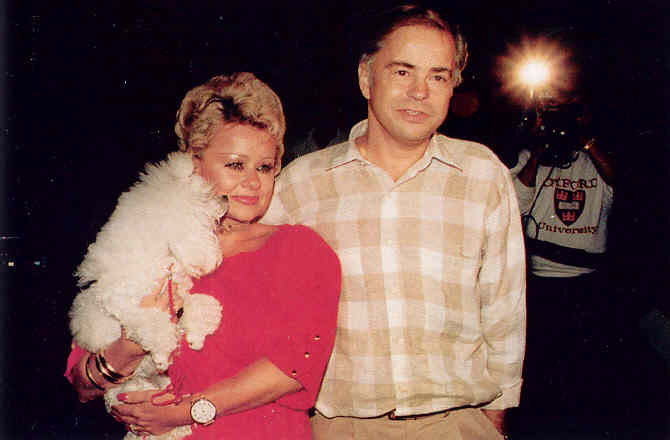
Tammy Faye and Jim Bakker
- televangelists – 1987 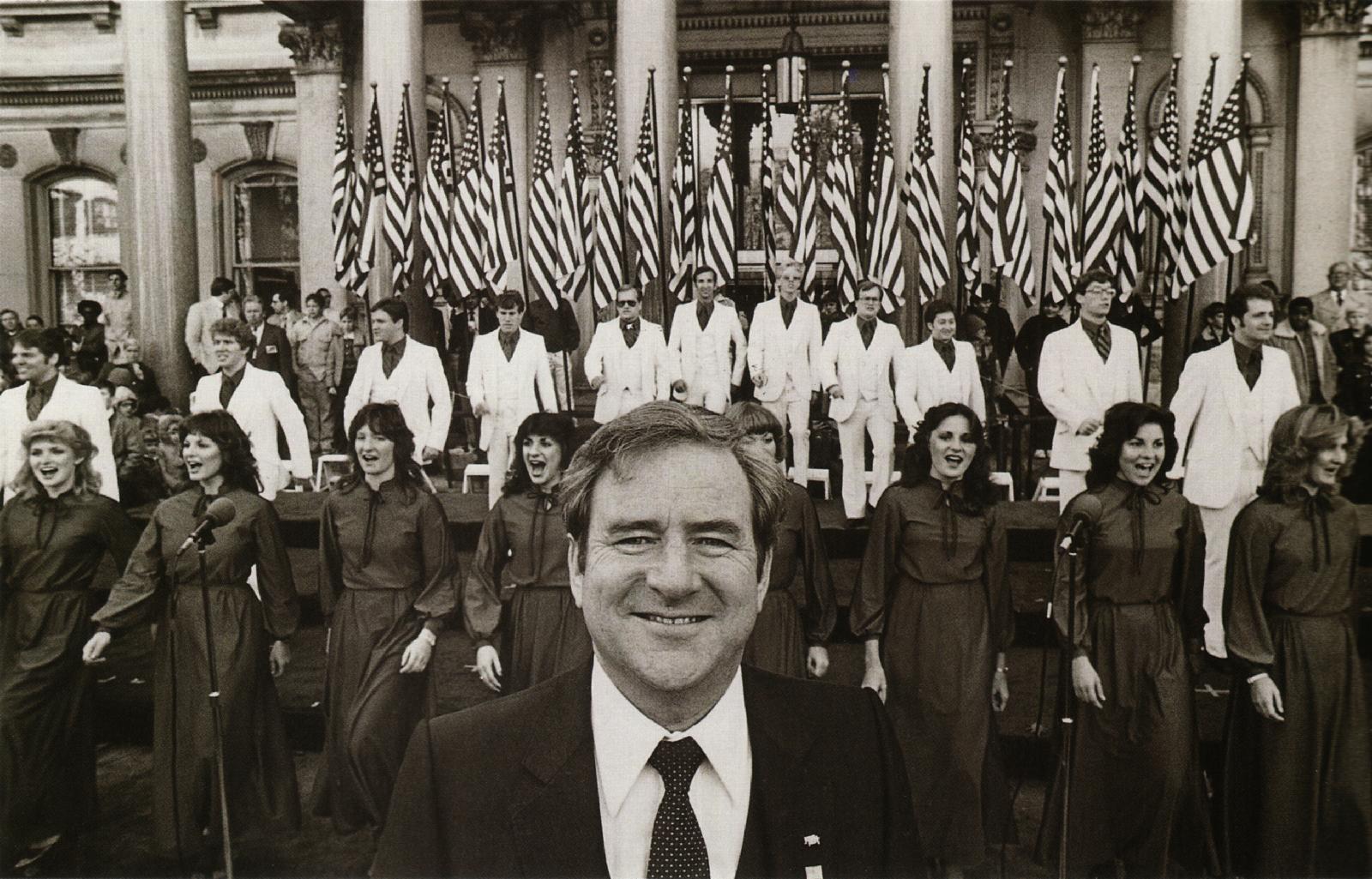
Jerry Falwell and his teleministry
team (the "Moral Majority") 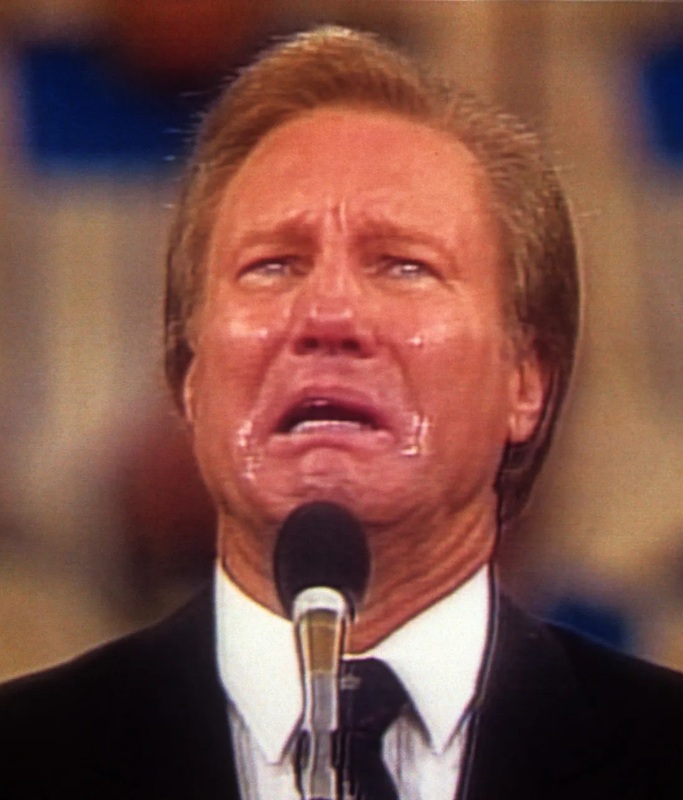 Very popular Louisana televangelist Jimmy Swaggert (February 1988) announcing over television "I have sinned" (sexual misconduct) ... which led to his expulsion from the Assemblies of God ministries. He continued his much-diminished ministry as a non-denominational pastor ... his own sins having confirmed the importance of God's (and his wife's) forgiveness.
"Pro-Life" protest against
abortion – opposed by "Pro-Choice" The discovery of AIDS – and the way it attacked active homosexuals – give the Liberal Secular-Humanist Left a new "victim" cause to crusade for.
Boomer Logic: "how can anyone be so "homophobic" as to be other than totally sympathetic to such poor wretches who have simply been following their "natural" homosexual instincts?"
Memorial Quilts laid out on the DC Mall – in memory of "AIDS Victims" – 1987 "Act Up" protesters in front
of FDA headquarters in Maryland protesting lack of AIDS
medical R&D – 1988. They eventually get the Federal government to move funding away
from the study of the causes of cancer ... to the "more important" study of the causes of AIDS.
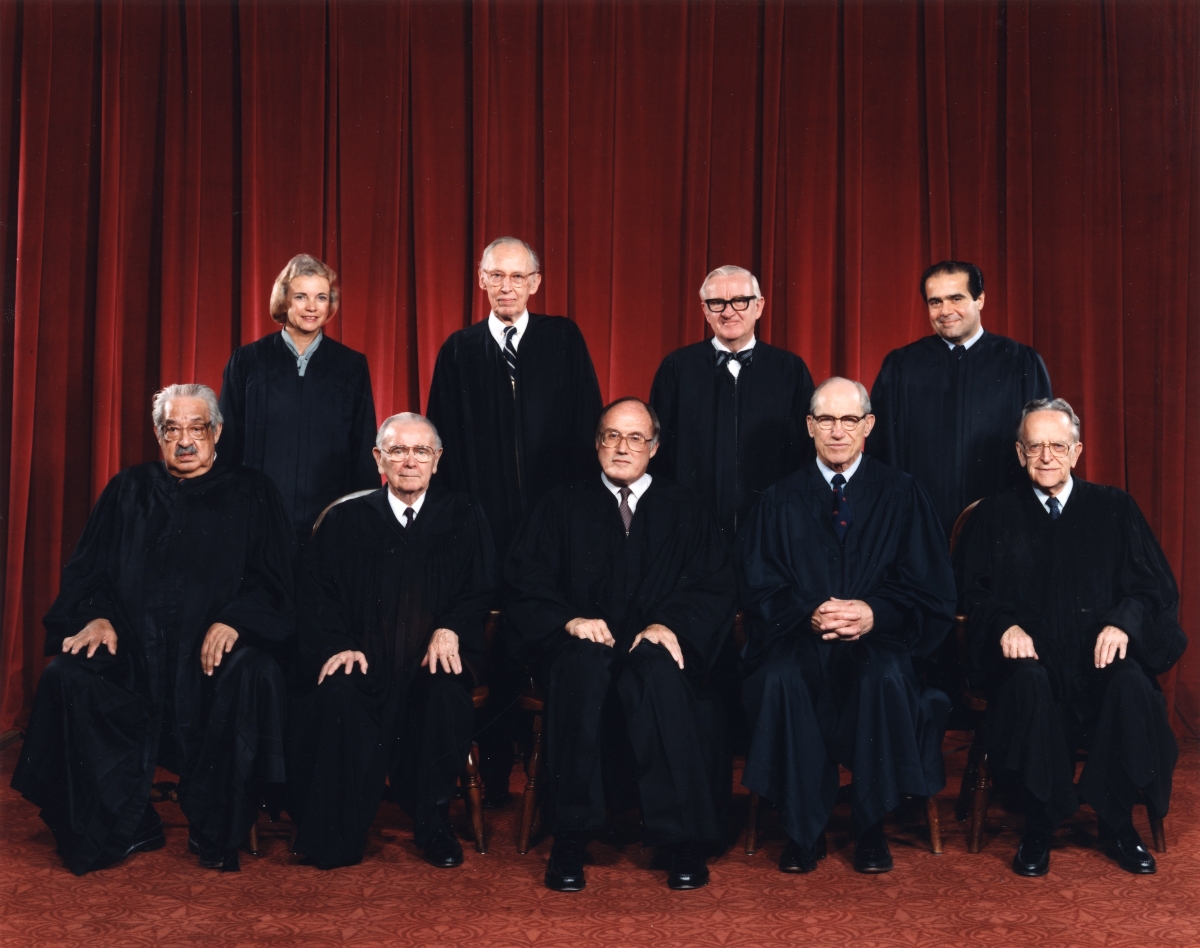 1987 – the Rehnquist court Only Justice Scalia (back right) and Chief Justice Rehnquist (center) dissented from the Edwards v. Aguillard decision
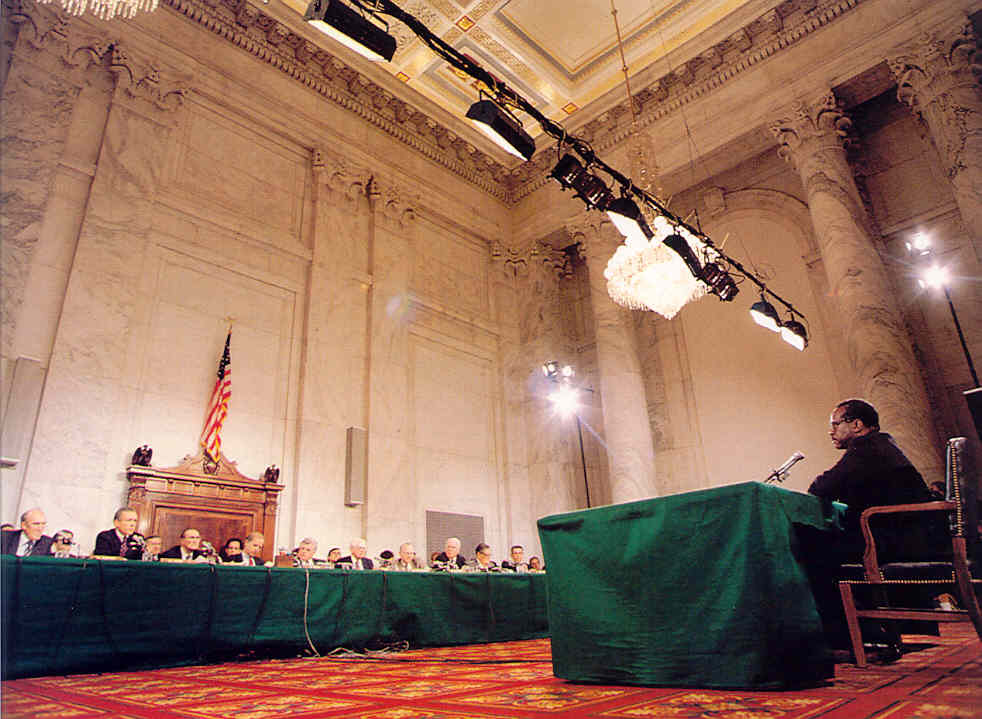 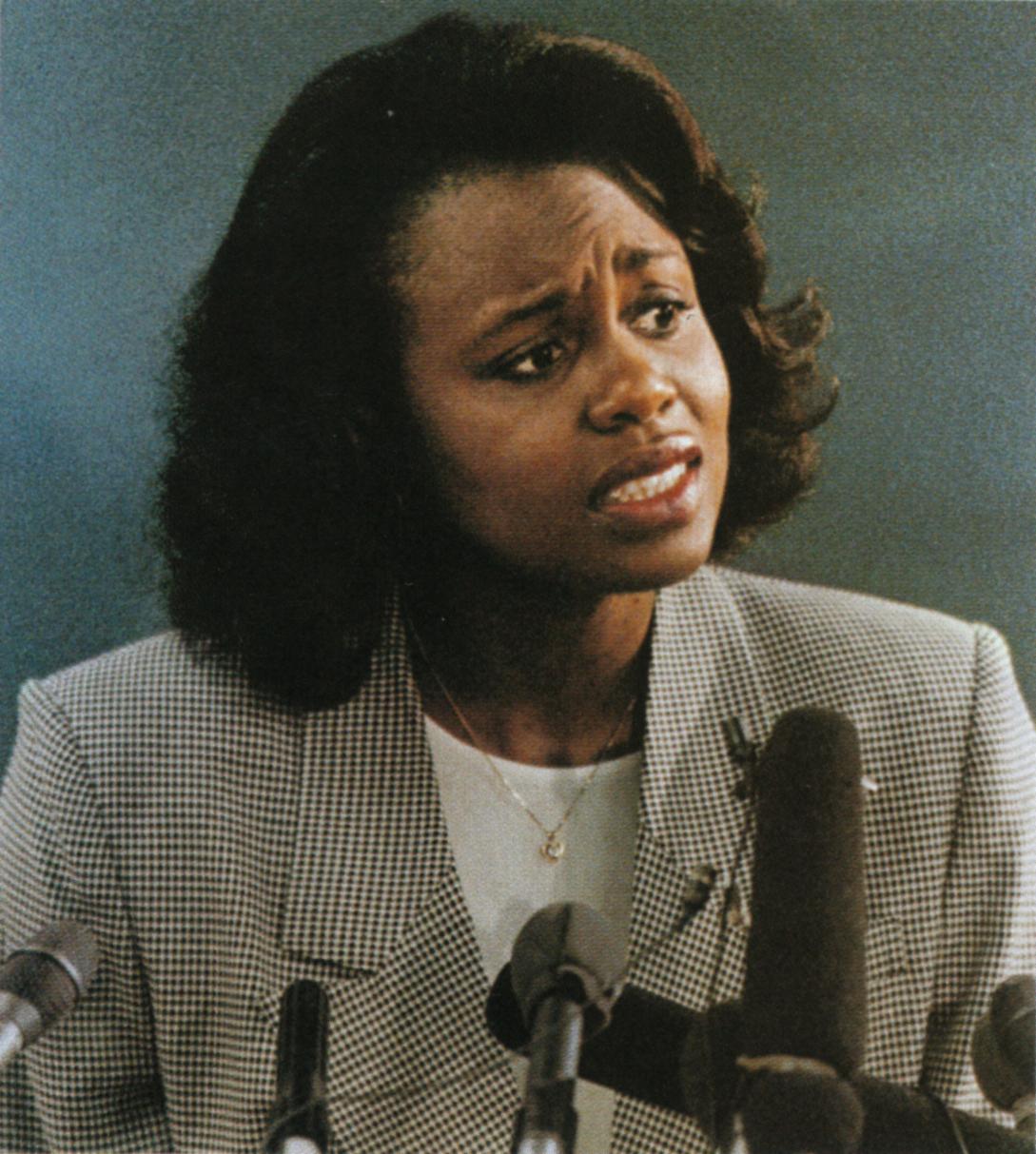 Anita Hill testifying that the behavior toward her of the Bush-appointee Clarence Thomas had been "inappropriate" 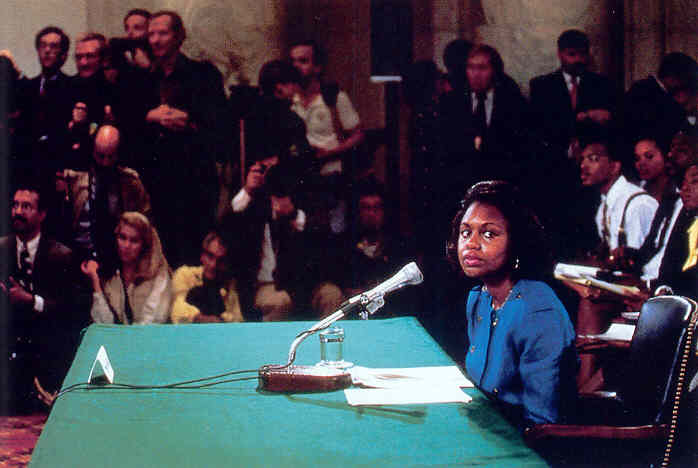 However ... numerous people testified that Hill's accusations were deeply wrong 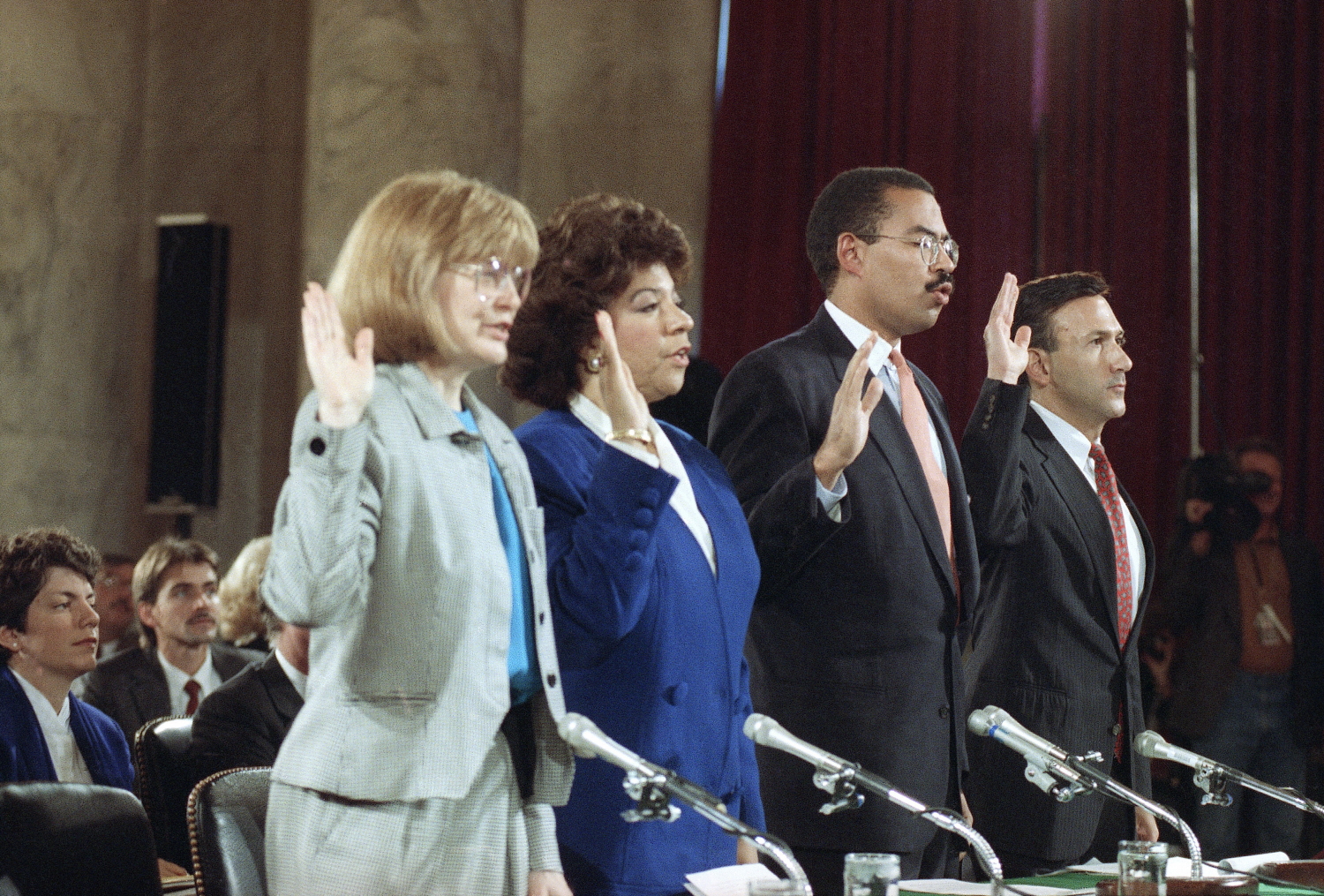
|
RACIAL FEELINGS EXPLODE: THE RODNEY KING INCIDENT |
|
On March 3, 1991, shortly after midnight, police had been chasing Rodney King and two companions, whom they believed to be pumped up on PCP, for he led several police cars and a police helicopter on a crazy chase from a Los Angeles freeway and into a residential neighborhood at high speeds. His car was finally cornered and the men arrested, and the three men ordered to the ground outside the car. When King then tried to get up, a scuffle developed, which led to a police-beating when King attempted to charge two of the police. King was knocked to the ground again and the police beatings continued as he refused to stay down. A man was trying out his new video camera and alerted by the sirens and helicopters everywhere went out to see what was going on. He videoed the last moments of the whole episode. He submitted the short section of tape to a TV reporter, and the tape aired repeatedly across the nation, showing the Los Angeles police beating up a Black man as he repeatedly tries to get up. The context of the whole chase and fight which went before was not part of the video. It simply looked like racist police brutality. That's certainly how the Blacks viewed it. No charges were ultimately filed against King, but four of the police were charged with assault and use of excessive force. But a jury acquitted the police on April 29, 1992 (an earlier part of the video that was not televised showed King charging the police before being brought down). This jury decision prompted angry Blacks to begin to riot. Immediately, very Liberal Mayor Tom Bradley held a news conference demonstrating also his anger at the verdict, perhaps not realizing that he was in a sense giving the go-ahead for others to vent a similar anger, with Los Angeles gangs (such as the Crips and the Bloods) taking the lead in the matter. Store windows started to be smashed (and goods inside seized) in protest. Then cars and trucks of Whites traveling through the neighborhoods were assaulted, their drivers pulled from their vehicles and beaten badly (some of this caught on video by TV helicopters). From there things simply got worse, out of total control actually. For the next six days the looting and burning spread to numerous L.A. neighborhoods. Finally the California National Guard and U.S. infantry and marine divisions had to be brought to Los Angeles to bring the rioting under control. When the damage caused by the riots was surveyed, it was discovered that 63 people had been killed, over 2,000 were injured, and 12,000 arrested. Also, thousands of buildings were looted and burned, with as many as 1,600 (or 45 percent of them) being owned by Korean shopkeepers, who were specifically targeted by the rioters. Estimates of the value of property-loss totaled over $1 billion. King eventually sued the city of Los Angeles, and was subsequently awarded $3.8 million, plus $1.7 million for his lawyers. Thus American justice was supposedly served somehow. King would continue to drink and take drugs, was arrested eleven more times, and finally drowned in his own swimming pool years later. |
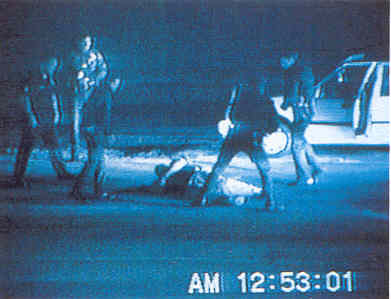
Los Angeles police officers
beating Rodney King after he led them on a late night chase – March 3,
1991
/font>


They even felt entitled to pull a White truck driver from his truck and bash his head with a brick and kick him mercilessly when down


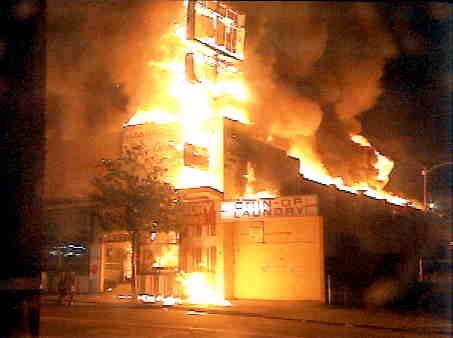
CHRISTIAN LEADERSHIP IN THE WHITE HOUSE |
|
We have noted the slow decline in the membership of the American church, and the redirecting of the Christian tradition in very new "post-modern" ways within the American nation during the 1980s and early 1990s. Was this true also at the level of the nation's leadership, in particular its presidents Reagan and Bush, Sr.?
Regan, as president, was as open about his Christian loyalties as the born-again Carter had been. But where Carter tended to hold his Christian faith as largely a very personal matter and avoided where possible mixing his private faith with his public responsibilities, Reagan was almost the opposite. It was hard to know exactly what Reagan's personal walk with God and Jesus happened to be. He tended to keep that to himself. But everyone knew exactly where he stood on the matter of the relationship that America as a nation was supposed to have with God. He spoke of the matter often, very often. The prominent Evangelicals of the day were very happy with this public support of the Christian faith, but upset that he made rather lame excuses for not attending Sunday worship, as had presidents before him. He said he did not want to disturb church services with all the hoopla that accompanied his appearance at events. But mostly previous presidents found that things settled down once church attendance took on more of a routine quality. Some said that ever since his near assassination he was nervous about the public exposure involved in something like Sunday worship. But this did not seem to keep him from frequent public appearances elsewhere. And he could have held services at the White House, as Nixon had done. But he was not interested in that either. On the other hand, the private as opposed to public Reagan seemed to have cultivated a very deep, prayerful, Scriptural relationship with God, one originating very early in his life.
By the time Bush arrived in the White House (January of 1989) Evangelical Christianity and Mainline Christianity were deeply at odds with each other, helping to weaken further the declining Christian moral-spiritual foundations of the country. As the mainline denominations became increasingly Liberal or "post-modern" in their positions on a number of hotly debated social issues (family versus profession as the center of life, sexual equality, racism, poverty, environment, prayer in public schooling, abortion, homosexuality, etc.), the Evangelicals became increasingly concerned that the church was drifting away from the long-standing principles of the Christian faith, ones that had served as the country's moral-spiritual foundations for the past several centuries. To Evangelicals, the new cultural trends of post-modern Liberalism, especially those taking lead in the older Christian denominations, seemed to be simply the work of the Deceiver (or Adversary, Satan) himself. And so it was that the strongly traditionalist Bush, who was a long-standing Episcopalian, often found himself at odds with the various "progressive" social-moral positions taken by the Episcopal Church's religious hierarchy (in particular its bishops and some of its clergy) that defined and controlled this rather aristocratic worshiping community. Bush personally could see no reason to abandon the traditional moral-spiritual standards of the Christian faith, the ones that he and his family (of many generations) had grown up with. This tended to give Bush the appearance of being something of an Evangelical. Certainly he got along easily with that community. Indeed, many of the events in his earlier life (such as being shot down at sea by a Japanese plane) had brought him very close to God. Bush was quick to affirm that he too was a born-again Christian. In some ways, Bush seemed to Americans simply to continue the religious character of the White House that they had become accustomed to under Reagan, except that Bush was a very active church-goer in the way Reagan had not been. But their public language was very similar. Bush continued to give strong support to the idea that America had a call from God to be a moral-spiritual guide to the world, of course along traditional Christian lines. In his public speeches he often (in more than 200 speeches) called on the nation to go to prayer over this or that matter. And like Reagan, Biblical verses and language found their way often into Bush's speeches. But in the later days of his four-year presidency, Bush seemed to his Evangelical supporters to have moved closer toward the Liberal or Progressive side of politics, particularly in the matter of homosexuality in American society. This was actually not quite the case. Bush still stood opposed to homosexual marriage and homosexuality in the military. But he had been very supportive of legislation in 1992 making it a special "hate crime" when a crime involved minorities, including homosexuals. And a statement he made on television made it appear that Bush had no particular problems with the homosexual lifestyle. Bush's efforts to counter that observation did not seem to convince the Evangelicals. Yet Bush in his last years as president was way more traditional than not only his denomination's episcopal hierarchy but also the National Council of Churches as well, both of which were moving strongly in the direction of allowing homosexual ordination and gay and lesbian marriage. Nonetheless this particular episode in which Bush tried to appear more "inclusive" in spirit succeeded only in weakening the vital support of Evangelicals in the 1992 elections. Nor did it improve his standing at all with the very sensitive "minorities," which were finding a louder voice in American politics.
In the meantime, the Vets, who actively supported Reagan and Bush, were slowly aging, and the Boomers, who had very different ideas about foundational moral-spiritual values than their parents, were coming into the fullness of age, now holding leading positions in America's public and private life. Accordingly, America was about to experience a major cultural shift in the coming years as the Vets retired from the social scene and the Boomers took the places of leadership in America.
Stephen Hawking – published
in 1988 the science best-seller A Brief History of Time 
The computer world is opened up to the average American with the creation of the personal computer Paul Allen and Bill Gates with their MS-DOS program – July 1981 My first PC (purchased in December of 1984) ... a very heavy "portable" Corona 8088 with two 5" floppy-disc drives (A and B and a 9" black/white screen built in. Cost me $2400 – not cheap. Also a dot-matrix printer. Go on to the next section: Clinton and the Arrival of the Boomer Era
 |
